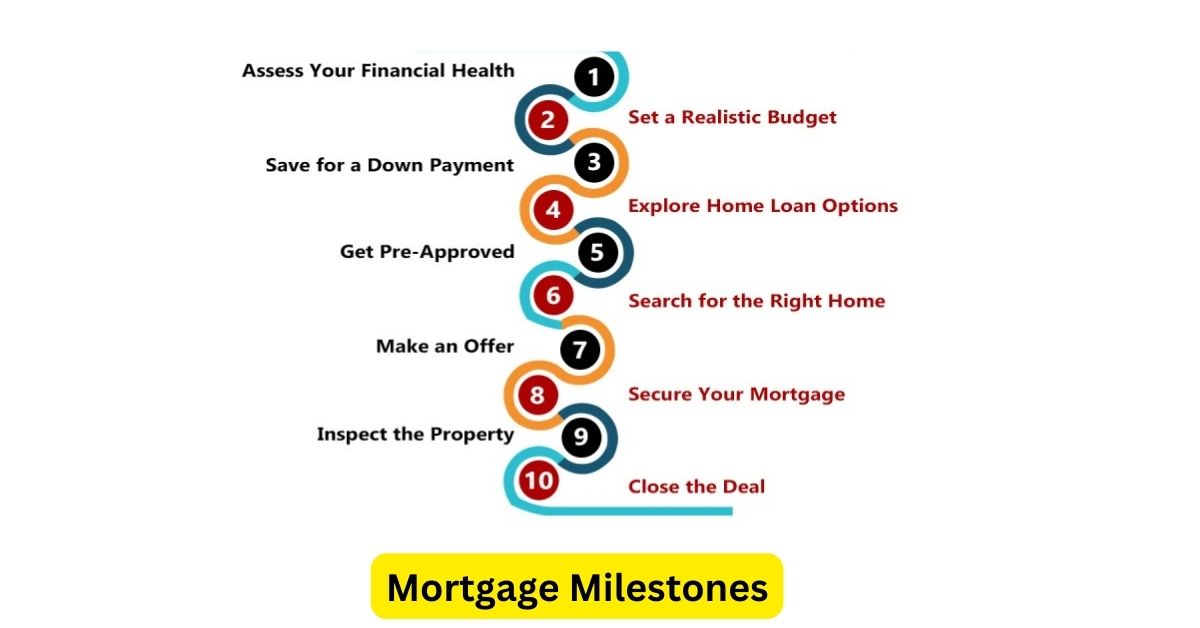Achieving homeownership is a significant milestone that requires careful planning and informed decision-making. Understanding the key steps in securing a mortgage can help you navigate this complex process with confidence and ease. Here’s a guide to the essential milestones on your path to homeownership success.
1. Assess Your Financial Health
Before embarking on the homebuying journey, take a comprehensive look at your financial health. Review your credit score, evaluate your savings, and calculate your debt-to-income ratio. A strong credit score can qualify you for better interest rates, while a lower debt-to-income ratio indicates financial stability. Ensure you have enough savings for a down payment, closing costs, and an emergency fund.
2. Determine Your Budget
Knowing how much you can afford is crucial in the homebuying process. Use online mortgage calculators to estimate your monthly payments based on different loan amounts, interest rates, and terms. Consider all homeownership costs, including property taxes, homeowner’s insurance, maintenance, and utilities. Setting a realistic budget helps you focus your home search and prevents financial strain.
3. Explore Mortgage Options
There are various types of mortgages, each with its own benefits and drawbacks. Fixed-rate mortgages offer stable monthly payments with an unchanging interest rate, providing predictability. Adjustable-rate mortgages (ARMs) start with lower rates that can fluctuate, which might be suitable if you plan to move or refinance before the rate adjusts. Government-backed loans, like FHA, VA, and USDA loans, provide options for buyers with lower credit scores or smaller down payments. Research and compare these options to find the best fit for your needs.
4. Get Pre-Approved
Mortgage pre-approval is a critical step that shows sellers you are a serious buyer. During pre-approval, lenders review your financial information and credit history to determine your loan eligibility and amount. This helps you set a realistic budget and strengthens your position in a competitive market. Pre-approval also highlights any financial issues that need addressing before you start house hunting.
5. Shop Around for Lenders
Don’t settle for the first mortgage offer you receive. Compare rates from multiple lenders, including banks, credit unions, and online mortgage companies. Pay attention to the interest rate, annual percentage rate (APR), and closing costs. Even a slight difference in rates can significantly impact the total cost of your mortgage.
6. Budget for Additional Costs
Beyond the mortgage, homeownership involves additional expenses such as closing costs, property taxes, homeowner’s insurance, and maintenance. Closing costs typically range from 2% to 5% of the loan amount. Create a comprehensive budget that includes these costs to ensure you can comfortably afford your new home.
7. Maintain Financial Stability
During the mortgage process, avoid making major financial changes such as opening new credit accounts, making large purchases, or changing jobs. Lenders may re-evaluate your financial status before finalizing the loan, and any significant changes could affect your approval. Maintaining financial stability is crucial for a smooth closing process.
8. Work with Professionals
Consider working with a mortgage broker who can help you navigate the complexities of the mortgage market and find the best loan products for your situation. A real estate agent can assist in finding a home that fits your budget and needs. Consulting with a financial advisor can also provide insights into how a mortgage fits into your overall financial plan.
Achieving homeownership success requires careful planning and informed decisions at every step. By assessing your financial health, determining your budget, exploring mortgage options, getting pre-approved, shopping around for lenders, budgeting for additional costs, maintaining financial stability, and working with professionals, you can navigate the mortgage process with confidence and secure your dream home.

